New Rapid-Drying Concrete Addresses Floor Covering Failures
Floor covering failures
If flooring materials are installed on a slab before it has reached an acceptable level of dryness, moisture can either prevent adhesives from properly curing or lead to the breakdown of adhesives due to the development of a saturated high pH environment at the surface of a slab. Adhesive degradation, blistering, disbondment, adhesive bleed and the expansion of flooring materials are all conditions that can be the result of excess moisture in the slab.
Historically contractors have either been forced to wait an extended period of time for the concrete to dry naturally to an acceptable level, or incur the cost and disruption of installing a topical moisture mitigation system. In either case the costs are significant and can delay the project completion beyond what may be acceptable.
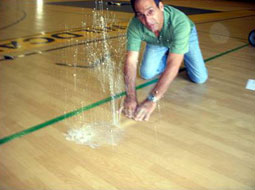 |
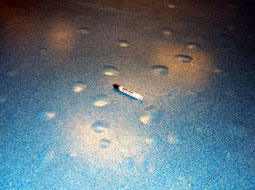 |
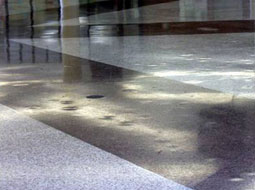 |
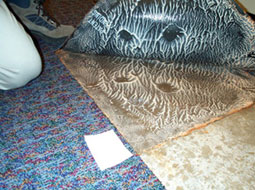 |
Elevated moisture levels in a concrete floor slab can result in indoor air quality issues and costly flooring damage. Photos provided by Craig & William Lepito |
|
Building occupant health problems
Another moisture-related issue that can be even more significant than the considerable cost of a flooring problem is the affect that moisture in and from the slab can have on indoor air quality—or more precisely, the critical role of moisture in the growth of mold.
Since the concept of Sick Building Syndrome first hit the headlines in the mid 1980s, numerous studies worldwide have investigated damp building related illnesses that include a myriad of respiratory, immunological and neurological symptoms. Multi-million dollar toxic mold settlements in the 1990s drew public attention to the issue while academics focused on analyses of mold growth on building materials and measurements of airborne particulate matter.
More recently researchers have assessed occupant exposure to airborne mycotoxins—the secondary metabolites produced by molds that are capable of causing disease and death in humans—and gained new insight into their biomechanisms No longer assumed or suspected to be the cause of health problems, mycotoxins from mold are a proven potential health hazard, Since mycotoxins thrive and multiply in humid conditions, the continued presence of moisture itself may be considered as a potential health hazard.
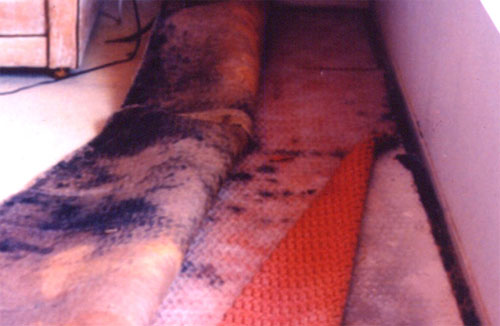 |
Mold containing mycotoxins can thrive beneath or within flooring materials when a high moisture condition is present in a concrete sub-floor. Photo courtesy of Hank Bruflodt |
VOC-forced changes in adhesive formulations
The drive to produce more environmentally safe building materials added to the challenge of successfully installing moisture-sensitive flooring materials over concrete sub-floors. In the 1990s national limits were established as to how much volatile organic compound (VOC) could be used in paints, coatings and adhesives. In some ways water-based adhesives are superior to their solvent-based predecessors. However since the change there has been a noticeable increase in the number of flooring issues.
| Overview of Problems Resulting from High Levels of Moisture in Conventional Concrete Slabs |
New rapid drying concrete technology addresses moisture emission issues from the beginning and at the source of the problem in the slab. Its characteristics include:
|
Testing Moisture Emissions
Most U.S. manufacturers of floor coverings, adhesives, and resinous coatings require that moisture tests be performed prior to the installation of their materials and that the tested levels are at or below limits considered to be safe for the installation of their materials.
Historically the most common test required by manufacturers has been the measurement of the Moisture Vapor Emission Rate (MVER) by the calcium chloride method described in ASTM F 1869. However, as the limitations of this test method have become better known, most manufacturers are now requiring that the concrete’s internal relative humidity level be tested in accordance with ASTM F 2170. These two test methods measure moisture in, or from a different portion of the slab. The MVER test measures moisture emitting from the top ½ in. to ¾ in. of the slab only. Measuring the concrete’s internal relative humidity helps to determine what the moisture level in the slab will be once the flooring materials are installed. It is important to understand that the results of either test can only be considered meaningful if a low-permeance vapor retarder is in-place directly below the slab. (For further reading on testing see Moisture Testing of Concrete Slabs: When 3 lbs is not 3 lbs, by Peter Craig and George Donnelly)









